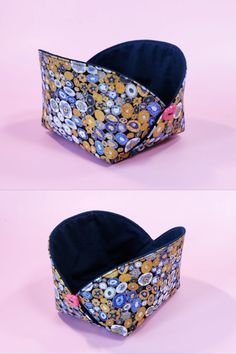Creating a fabric storage box – pattern is a practical and creative way to organize your space while adding a personal handmade touch to your home décor. Whether you’re organizing your sewing supplies, kids’ toys, or miscellaneous items around the house, a well-designed fabric storage box – pattern helps you stay tidy in style. This simple yet functional project is ideal for beginner sewists and DIY enthusiasts alike.
What makes this pattern so appealing is its versatility. You can customize the size, fabric type, colors, and structure to match your room theme or storage needs. A sturdy fabric storage box not only keeps your essentials in order but also serves as a decorative accent in closets, shelves, or craft rooms. Plus, it’s an eco-friendly alternative to plastic storage containers.
This article will walk you through everything you need to know to make your own fabric storage box – pattern, from choosing the right materials to sewing techniques and design variations. With easy-to-follow tips and clear explanations, you’ll be able to create a durable and stylish storage solution in no time.

1. Choosing Materials for Your Fabric Storage Box – Pattern
Selecting the right materials is the foundation of any successful fabric storage box – pattern. The fabric you choose should balance both style and durability to withstand frequent use while maintaining its shape.
Start by picking your outer fabric. Heavier materials like canvas, duck cloth, or upholstery fabric are ideal for structure and support. These fabrics add weight and stiffness, helping the box stand upright. Choose colors or prints that complement the space where you’ll use the box.
For the lining fabric, you can go with lighter cotton or coordinating quilting fabric. This inner layer adds a nice visual touch when the box is opened. It’s best to choose something that contrasts well with the outer fabric or adds a pop of color.
Don’t forget about stabilizers. To keep the box firm, you’ll need interfacing or batting. Fusible interfacing is a popular choice because it can be ironed directly onto the fabric. For more rigidity, use heavyweight interfacing or even plastic canvas inserts.
Handles or grips can be made from fabric strips, cotton webbing, or leather straps, depending on your desired look. Adding handles makes it easier to move the box from place to place.
Lastly, gather basic sewing tools like scissors, pins, sewing machine, thread, and measuring tape. If you have access to a cutting mat and rotary cutter, it’ll make the process faster and more precise.
Taking time to gather and choose the right materials ensures your fabric storage box – pattern will not only look great but also last longer and serve its purpose well.
2. Steps to Create a Basic Fabric Storage Box – Pattern
Once you’ve selected your materials, it’s time to start crafting your fabric storage box – pattern. Don’t worry if you’re a beginner—this project is simple enough for most skill levels with just a few key steps.
Begin by measuring and cutting your fabric. Decide on the final size of your box (e.g., 10×10 inches) and cut both the outer and lining fabrics accordingly. Remember to include seam allowances (usually ½ inch) on all sides.
Next, apply the interfacing to the wrong side of the outer fabric pieces. Use an iron according to the interfacing’s instructions. This will stiffen the fabric and give your box its shape. If you’re using batting, quilt it to the outer fabric at this point.
Sew the sides of your outer fabric together, forming a square or rectangular box shape. Repeat this process for the lining fabric. Then, create box corners by pinching and sewing the bottom corners, making a triangle and stitching across to create a flat base.
Once both the outer and lining boxes are assembled, place them right sides together, aligning the top edges. Pin them carefully and sew around the top edge, leaving a small opening to turn the fabric right-side out.
Turn the box right-side out through the opening. Push out all the corners and edges, then press the top seam flat. Finally, topstitch around the edge to close the opening and give the box a clean finish.
Now your basic fabric storage box – pattern is complete! You can add extra touches like handles or labels at this stage. Even simple boxes look polished and professional with the right finishing.
3. Design Variations and Customizations
One of the best things about the fabric storage box – pattern is how easily it can be personalized to suit your needs or aesthetic preferences. With a little creativity, each box you make can look and function differently.
Consider adding interior pockets to your storage box. This is useful for organizing smaller items such as scissors, thread spools, or office supplies. You can sew pockets onto the lining fabric before assembling the box.
Use decorative elements like appliqué, embroidery, or fabric paint to make your box stand out. These embellishments allow you to express your personal style or match the décor of your space.
If you want a collapsible box for easy storage, try using flexible interfacing or omitting it altogether. You can even insert a removable cardboard base to provide temporary structure when in use.
To create stackable boxes, make multiple boxes in uniform sizes and reinforce the sides with stronger interfacing or cardboard panels sewn into fabric sleeves.
Another fun variation is to create reversible boxes. Use two attractive fabrics for the outer and lining pieces, and skip adding pockets or labels. This allows you to flip the box inside-out and change the look whenever you want.
For children’s rooms, try themed fabrics—like animals, space, or dinosaurs—to make the boxes more engaging and fun. Label each box with embroidered letters or iron-on patches for better organization.
4. Best Uses for Fabric Storage Box – Pattern
The fabric storage box – pattern is not only fun to make but also highly functional in various parts of your home. You can use them in nearly every room for practical and stylish storage.
In the sewing or craft room, these boxes are perfect for holding fabric scraps, threads, buttons, and tools. Create different sizes and label them for efficient access while working on projects.
Use them in the bathroom for storing towels, toiletries, or skincare items. Waterproof or laminated fabric can be used for lining to protect from moisture and spills.
In the kitchen or pantry, fabric boxes can hold tea bags, snacks, or utensils. Choose darker, stain-resistant fabrics or washable liners for easy maintenance.
For bedrooms, they can serve as organizers in drawers, under the bed, or inside closets. Store socks, accessories, or seasonal items in personalized fabric containers.
If you have kids, fabric boxes are great for toy storage. They’re lightweight and safe for little hands to use. You can make soft, collapsible boxes with playful designs to encourage cleanup time.
Finally, use these boxes for gift giving. Instead of wrapping presents in disposable paper, place them inside a beautiful handmade fabric box. It’s eco-friendly and doubles as an extra gift.
Frequently Asked Questions (FAQ)
What is a fabric storage box – pattern?
It’s a sewing guide or template used to create a fabric container designed for organizing household or craft items. The pattern outlines measurements, materials, and construction steps.
Is the fabric storage box washable?
Yes, most fabric storage boxes can be hand or machine washed, especially if made with cotton or canvas. Be sure to use washable interfacing and prewash fabrics before sewing.
Can I make a fabric storage box without a sewing machine?
Yes, although it takes more time, you can hand-stitch the box using a strong backstitch or whipstitch. It’s a great slow-sewing project for beginners.
What’s the best fabric to use for structure?
Heavy fabrics like canvas, duck cloth, or denim provide excellent structure. You can also use interfacing, batting, or cardboard inserts for added firmness.
Can I customize the size of the storage box?
Absolutely. You can resize the pattern easily by adjusting your fabric cuts and measurements. Just remember to include seam allowances.
Are there free patterns available online?
Yes, many sewing blogs and crafting websites offer free downloadable fabric storage box – patterns. You can also draft your own if you’re comfortable with measurements.
Conclusion
Learning how to create a fabric storage box – pattern is both a useful and enjoyable experience. It combines creativity, organization, and sustainability in one simple project. From choosing the perfect fabric to adding personalized touches, you have full control over the design and function of your storage box.
This guide has walked you through material selection, step-by-step construction, creative variations, and the many practical uses of your finished box. Whether you’re a beginner or advanced sewist, this pattern is a great way to enhance your sewing skills and keep your home neat and beautiful.
We’d love to hear your thoughts! If you’ve tried this project or plan to, please leave your honest opinion in the comments and share any suggestions or improvements you think would help others. Happy sewing!

